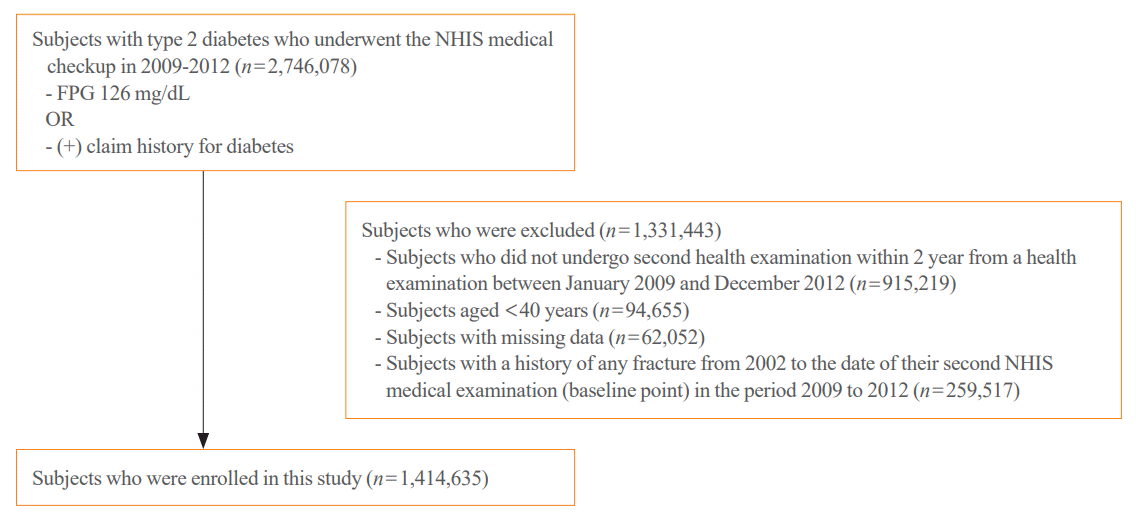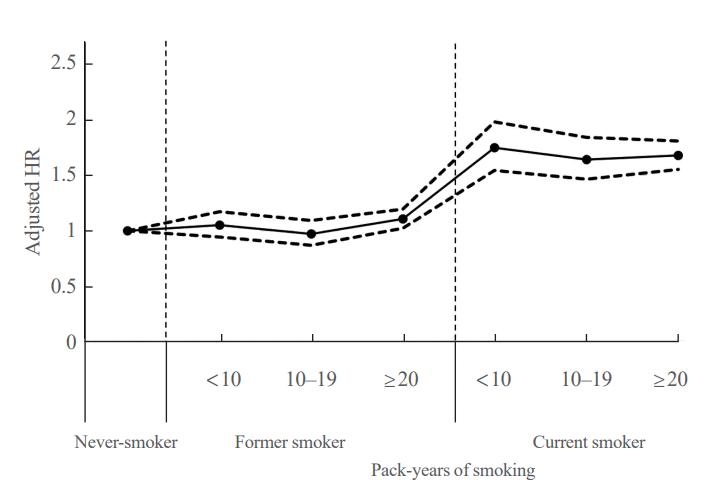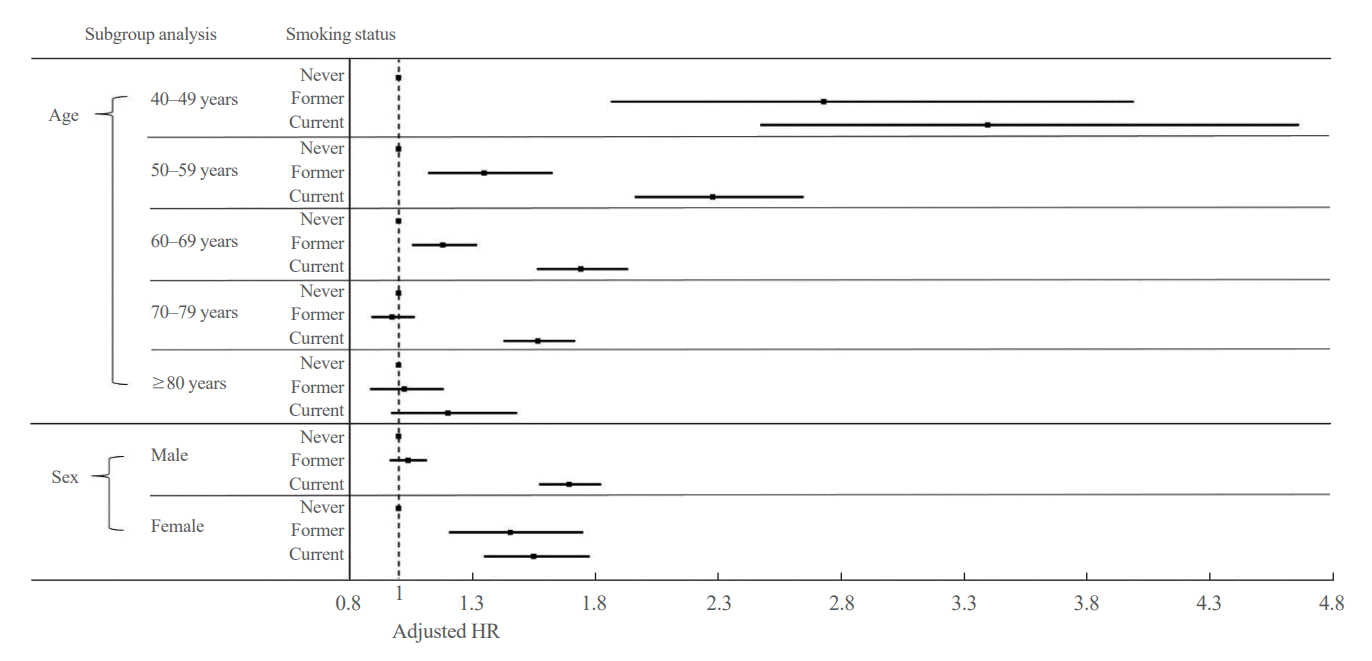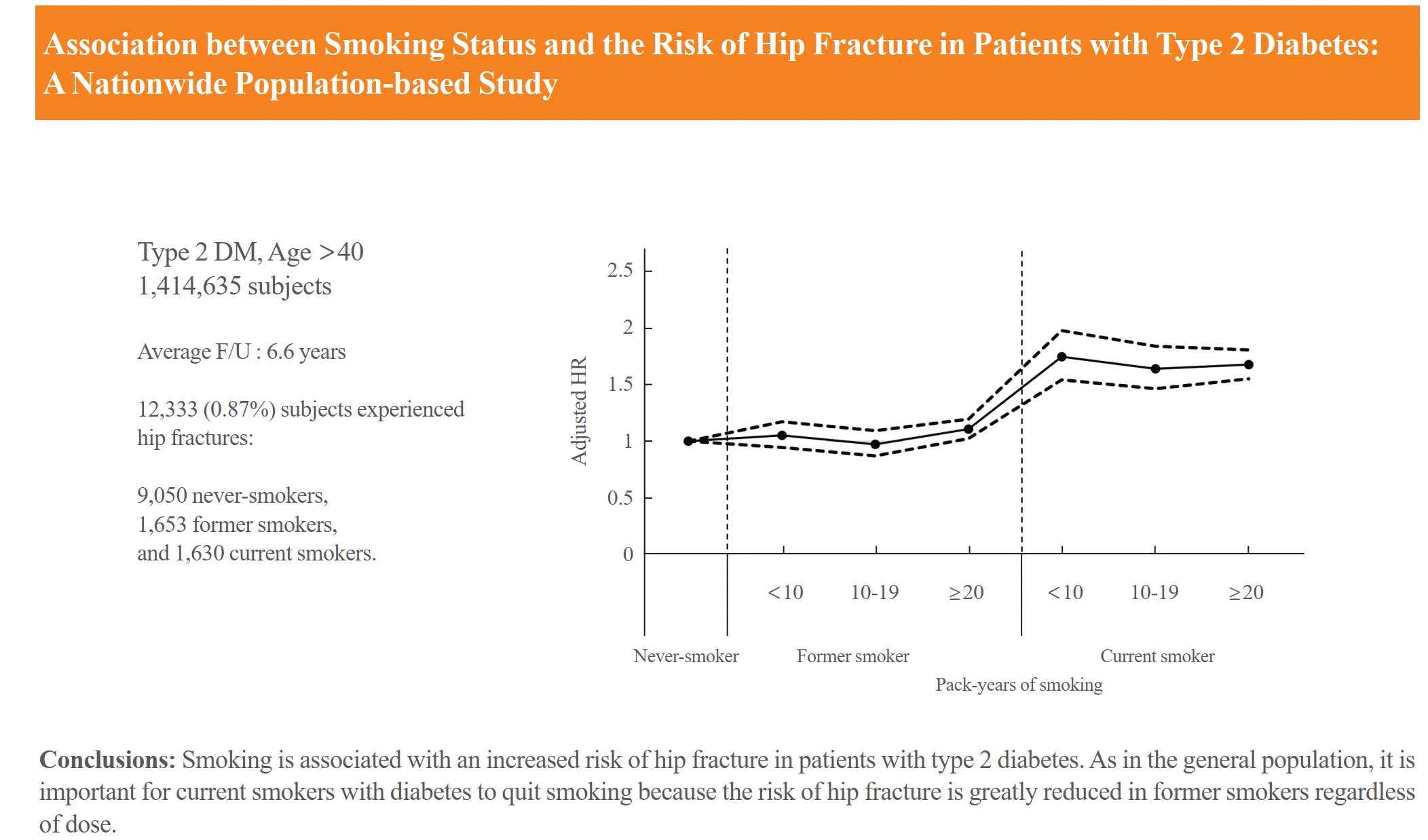1. Yoon V, Maalouf NM, Sakhaee K. The effects of smoking on bone metabolism. Osteoporos Int. 2012; 23:2081–92.

2. Wakasugi M, Kazama JJ, Nitta K, Narita I. Smoking and risk of fractures requiring hospitalization in haemodialysis patients: a nationwide cohort study in Japan. Nephrol Dial Transplant. 2022; 37:950–9.

3. Holmberg AH, Johnell O, Nilsson PM, Nilsson JA, Berglund G, Akesson K. Risk factors for hip fractures in a middle-aged population: a study of 33,000 men and women. Osteoporos Int. 2005; 16:2185–94.

4. Olofsson H, Byberg L, Mohsen R, Melhus H, Lithell H, Michaelsson K. Smoking and the risk of fracture in older men. J Bone Miner Res. 2005; 20:1208–15.

5. Benetos IS, Babis GC, Zoubos AB, Benetou V, Soucacos PN. Factors affecting the risk of hip fractures. Injury. 2007; 38:735–44.

6. Rodrigues AM, Caetano-Lopes J, Vale AC, Aleixo I, Pena AS, Faustino A, et al. Smoking is a predictor of worse trabecular mechanical performance in hip fragility fracture patients. J Bone Miner Metab. 2012; 30:692–9.

7. Cummings SR, Nevitt MC, Browner WS, Stone K, Fox KM, Ensrud KE, et al. Risk factors for hip fracture in white women. Study of Osteoporotic Fractures Research Group. N Engl J Med. 1995; 332:767–73.
8. Park HY, Han K, Kim Y, Kim YH, Sur YJ. The risk of hip fractures in individuals over 50 years old with prediabetes and type 2 diabetes: a longitudinal nationwide populationbased study. Bone. 2021; 142:115691.
9. Shao CJ, Hsieh YH, Tsai CH, Lai KA. A nationwide seven-year trend of hip fractures in the elderly population of Taiwan. Bone. 2009; 44:125–9.

10. Ampelas DG. Current and former smokers and hip fractures. J Frailty Sarcopenia Falls. 2018; 3:148–54.

11. Yang YS, Sohn TS. Smoking as a target for prevention of diabetes. Diabetes Metab J. 2020; 44:402–4.

12. Kim JH, Seo DC, Kim BJ, Kang JG, Lee SJ, Lee SH, et al. Association between cigarette smoking and new-onset diabetes mellitus in 78,212 Koreans using self-reported questionnaire and urine cotinine. Diabetes Metab J. 2020; 44:426–35.

14. Ko SH, Han K, Lee YH, Noh J, Park CY, Kim DJ, et al. Past and current status of adult type 2 diabetes mellitus management in Korea: a national health insurance service database analysis. Diabetes Metab J. 2018; 42:93–100.

15. Yun WJ, Shin MH, Kweon SS, Ryu SY, Rhee JA. Association of smoking status, cumulative smoking, duration of smoking cessation, age of starting smoking, and depression in Korean adults. BMC Public Health. 2012; 12:724.

16. Park S, Chun J, Han KD, Soh H, Kang EA, Lee HJ, et al. Dose-response relationship between cigarette smoking and risk of ulcerative colitis: a nationwide population-based study. J Gastroenterol. 2019; 54:881–90.

17. Kulak JA, LaValley S. Cigarette use and smoking beliefs among older Americans: findings from a nationally representative survey. J Addict Dis. 2018; 37:46–54.

18. Agarwal DP. Cardioprotective effects of light-moderate consumption of alcohol: a review of putative mechanisms. Alcohol Alcohol. 2002; 37:409–15.

19. International Physical Activity Questionnaire. Guidelines for data processing and analysis of the International Physical Activity Questionnaire (IPAQ) [Internet]. International Physical Activity Questionnaire Research Committee;2005. [cited 2023 Oct 5]. Available from:
https://www.ipaq.ki.se.
20. Kleinbaum DG, Klein M. Survival analysis. 2nd ed. New York: Springer;2005.
21. Botella Martinez S, Varo Cenarruzabeitia N, Escalada San Martin J, Calleja Canelas A. The diabetic paradox: bone mineral density and fracture in type 2 diabetes. Endocrinol Nutr. 2016; 63:495–501.

22. Chen C, Chen Q, Nie B, Zhang H, Zhai H, Zhao L, et al. Trends in bone mineral density, osteoporosis, and osteopenia among U.S. adults with prediabetes, 2005-2014. Diabetes Care. 2020; 43:1008–15.

23. Holmberg AH, Nilsson PM, Nilsson JA, Akesson K. The association between hyperglycemia and fracture risk in middle age: a prospective, population-based study of 22,444 men and 10,902 women. J Clin Endocrinol Metab. 2008; 93:815–22.

24. Lee SW, Han K, Kwon HS. Weight change and the risk of hip fractures in patients with type 2 diabetes: a nationwide cohort study. Osteoporos Int. 2022; 33:1755–67.

25. Martinez-Laguna D, Tebe C, Javaid MK, Nogues X, Arden NK, Cooper C, et al. Incident type 2 diabetes and hip fracture risk: a population-based matched cohort study. Osteoporos Int. 2015; 26:827–33.

26. Hothersall EJ, Livingstone SJ, Looker HC, Ahmed SF, Cleland S, Leese GP, et al. Contemporary risk of hip fracture in type 1 and type 2 diabetes: a national registry study from Scotland. J Bone Miner Res. 2014; 29:1054–60.

27. Melton LJ 3rd, Leibson CL, Achenbach SJ, Therneau TM, Khosla S. Fracture risk in type 2 diabetes: update of a population-based study. J Bone Miner Res. 2008; 23:1334–42.

28. Lipscombe LL, Jamal SA, Booth GL, Hawker GA. The risk of hip fractures in older individuals with diabetes: a population-based study. Diabetes Care. 2007; 30:835–41.
29. Ahmed LA, Joakimsen RM, Berntsen GK, Fonnebo V, Schirmer H. Diabetes mellitus and the risk of non-vertebral fractures: the Tromso study. Osteoporos Int. 2006; 17:495–500.

30. de Liefde II, van der Klift M, de Laet CE, van Daele PL, Hofman A, Pols HA. Bone mineral density and fracture risk in type-2 diabetes mellitus: the Rotterdam Study. Osteoporos Int. 2005; 16:1713–20.

31. Hoidrup S, Prescott E, Sorensen TI, Gottschau A, Lauritzen JB, Schroll M, et al. Tobacco smoking and risk of hip fracture in men and women. Int J Epidemiol. 2000; 29:253–9.

32. Hopkins DP, Briss PA, Ricard CJ, Husten CG, Carande-Kulis VG, Fielding JE, et al. Reviews of evidence regarding interventions to reduce tobacco use and exposure to environmental tobacco smoke. Am J Prev Med. 2001; 20(2 Suppl):16–66.

33. Ward KD, Klesges RC. A meta-analysis of the effects of cigarette smoking on bone mineral density. Calcif Tissue Int. 2001; 68:259–70.

34. Hundrup YA, Hoidrup S, Ekholm O, Davidsen M, Obel EB. Risk of low-energy hip, wrist, and upper arm fractures among current and previous users of hormone replacement therapy: the Danish Nurse Cohort Study. Eur J Epidemiol. 2004; 19:1089–95.

35. Jenkins MR, Denison AV. Smoking status as a predictor of hip fracture risk in postmenopausal women of northwest Texas. Prev Chronic Dis. 2008; 5:A09.
36. Cornuz J, Feskanich D, Willett WC, Colditz GA. Smoking, smoking cessation, and risk of hip fracture in women. Am J Med. 1999; 106:311–4.

37. Kanis JA, Johnell O, Oden A, Johansson H, De Laet C, Eisman JA, et al. Smoking and fracture risk: a meta-analysis. Osteoporos Int. 2005; 16:155–62.

38. Jorgensen L, Joakimsen R, Ahmed L, Stormer J, Jacobsen BK. Smoking is a strong risk factor for non-vertebral fractures in women with diabetes: the Tromso Study. Osteoporos Int. 2011; 22:1247–53.
39. Heo HC, Byun YS, Sohn SH, Jo SM, Park SK, Sakong J. Validity assessment of self-reported smoking status in firefighters using the urine cotinine test. Ann Occup Environ Med. 2020; 32:e2.

40. Cho IY, Cho MH, Lee K, Park SM, Lee H, Son JS, et al. Effects of smoking habit change on hospitalized fractures: a retrospective cohort study in a male population. Arch Osteoporos. 2020; 15:29.

41. Santi SA, Conlon MS, Meigs ML, Davidson SM, Mispel-Beyer K, Saunders DP. Rates of smoking cessation at 6 and 12 months after a clinical tobacco smoking cessation intervention in head and neck cancer patients in Northern Ontario, Canada. Curr Oncol. 2022; 29:1544–58.








 PDF
PDF Citation
Citation Print
Print




 XML Download
XML Download